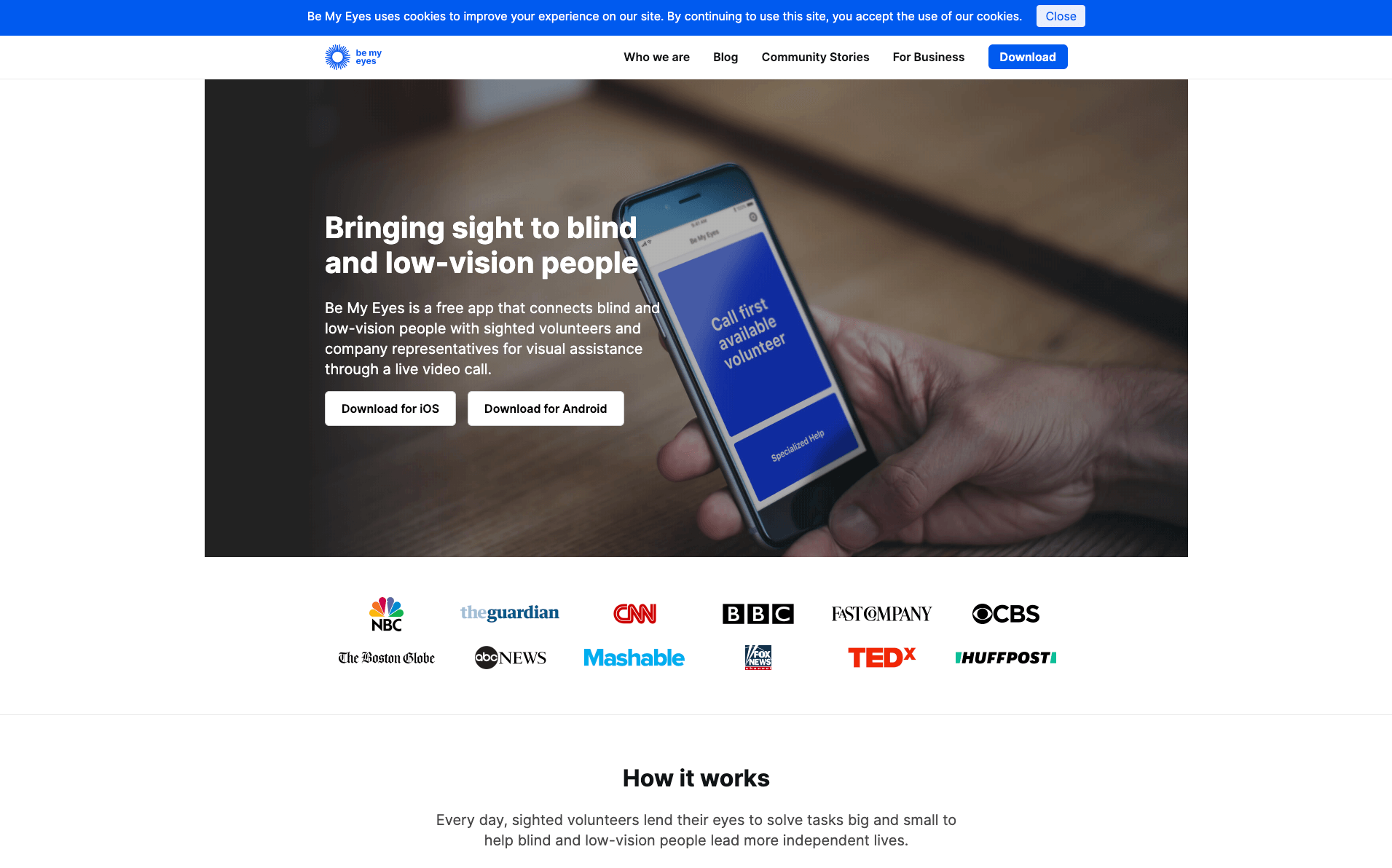At their core, designers are problem solvers. And while we’re arguably living in the most empathetic time in history, as a world we still have an urgent need for creative solutions to some big problems.
These problems have many different dimensions, many of which are often not visible at first.
Designers can help us discover the full scope of a problem, and bring all of its aspects into view. And by empowering designers to tackle big problems, we have the best chance of finding creative and collaborative solutions.
Former US President John F. Kennedy once said, “One person can make a difference, and everyone should try.” In 2020, we’re calling on ourselves here at Designlab—and on all the designers out there—to embody this idea through their work.
Keep reading to discover what “design for good” means, and a heap of actionable tips and resources to support your next project!
What is Design?
Before we dive in to exploring design for good, let’s take a moment to consider how to define design itself.
Design is, in essence, a way of thinking that can be applied to solving any problem: design processes can be found in fields as diverse as architecture, fashion, urban planning, branding, and even life itself. It can focus on private or public, work or play, analog or digital.
What all designers have in common is that they aim to mentally “surround” a problem: to observe, discover, and explore it from every angle they can think of.
Far from being “just” an aesthetic discipline, design is an approach to problem-solving itself. It combines a thorough analysis of people’s needs with creative and patient development of potential solutions.
Great designers also understand that the best solution may not be the most obvious one.
What is Design for Good?
Design for good has many different names. Here are just a few:
- Design for Social Good
- Social Impact Design
- Impact Design
We like to think of design for good as using your particular design skills to help create positive change.
According to Justin Hanson, Sr. Product Designer at Classy,
“Design for good means using our magic powers to educate and give control to the people we serve. It means leaning towards transparency, and never attempting to deceive. It’s important to work with a team that is truly making the world a better place—this means looking beyond their sales pitch, putting down the Kool-Aid, and really analyzing the impact they create.”
Amongst other domains, design for good can pertain to social, environmental, humanitarian, sustainable, human-centered, or public-interest design.
While this answers the question, “what is design for good?”, it also raises another one: isn’t all design “design for good”?
Our answer? It should be. After all, design for good is really just good design.
What Does Design for Good Look Like?
A key aspect of good design is that it is human-centered.
Things that are developed using a design for good ethos, too, have people at the center—not a business, government department, or other abstract entity.
While the language of “design for good” is relatively new, all design impacts people, and it always has done. From the cooking utensils designed to influence how we cook and eat, to the social media platforms that affect (and often exploit) or brain chemistry and relationships—all design has social effects.
Who Can Design for Good?
Anyone and everyone can design for good.
But to be specific, here are some job sectors which present clear opportunities for social impact:
- UX/UI design
- Product design
- Graphic design
- Event planning
- Architecture
For example, architects can design buildings that are environmentally responsible and resource-efficient. Meanwhile, event planners can source biodegradable plates and napkins for their next large-scale event.
When it comes to digital products like apps and websites, UX/UI designers also have significant opportunities to help shape a better world.
What are Examples of Design for Good?
Examples of design for good can be found all over the web, from nonprofits, to activism, to educational content.
Here are some of our favorites.
Be My Eyes
Be My Eyes is a free mobile app that connects blind and vision impaired people with volunteers for visual assistance via a video call. This app can best be described through one of the community stories they feature on their website:
One morning, as Nawaal was getting ready for an event, she received her first Be My Eyes call; an experience she vividly remembers. Nawaal was connected to a woman, who had dropped a coin and needed assistance finding it on the floor. Together, they scanned the floor for a couple of minutes, until Nawaal was able to locate the coin that had rolled half-way under a cupboard. Nawaal instructed the woman to bend down, put her hand out and directed her hand to the coin. “After I ended the call, I took a moment to myself, and I sort of had these tears of joy in my eyes, because I think it was so rewarding”, Nawaal explains.

Slavery Footprint
Slavery Footprint is a website built around a survey that asks, “How Many Slaves Work For You?” The survey prompts you to input data about your spending habits, and then provides you with a graphical “footprint” of the your participation in modern-day slavery. Prepare to be shocked.

Star Atlas
Star Atlas is a mobile video game designed to provide early intervention support to children aged 7-12 years with anxiety by combining exposure therapy with an immersive gaming experience.
The product is not yet available to the public, and is still undergoing research. But the early results are promising, and we’re excited to see what becomes of it.
How Can I Get Involved in Design for Good?
There are many different people, organizations, and causes that would be thrilled to have support from someone interested in applying their design skills.
Here are just a few issues worthy of designers’ attention:
- Domestic violence
- Homelessness
- Race and gender equality
- Nutrition and obesity
- Immigration
- Gentrification
- Voter registration
- Recycling
- Prisoner programs
- Veterans
- Clean water
To get started with design for good projects, we’d recommend first volunteering or working below your standard pay rate. Unfortunately, many of these causes are under-served, and thus underfunded.
Graphic designer Aaron Draplin follows a personal practice called “Free Fridays”, where he offers his skills for free each week to a cause that needs help.
Here are some resources where you can discover design for good opportunities.
Open IDEO
This open platform from international design and consulting firm, IDEO, seeks to solve challenges for the collective social good. This global community of over 50,000 people work together to solve tough problems, and you can join them.
Design Gigs for Good
Design Gigs for Good is a free community-driven resource to help more people use the tools of design to create positive social change. They provide a free job board full of opportunities at the intersection of design and social impact. You can also join their public, international community for people using design to change the world.
AIGA’s Design for Good
As the largest professional association of designers in the world, AIGA is committed to advancing the value and impact of design, both locally and globally. Their Design for Good umbrella includes the following strategic initiatives:
- Design for Democracy
- Diversity and Inclusion
- Women Lead
- Design for Communities
3 Key Principles of Design for Good
#1: Success is not marked by production of a product or completion of a project, but rather by observation and feedback over the long-term.
Feedback is a critical element of design for good. Because the overall aim of design for good is to create social change that positively impacts humans—feedback is the only true measure of success.
#2: Always be interrogating systems—economic, institutional, social, political—in order to identify opportunities for changes that will give voice to those who have been disenfranchised or marginalized by design.
The willingness to question the status quo is a must in design for good. As changemakers, designers must be ready to speak out against injustices and come prepared with creative solutions. (See also our piece on Hilary Cottam’s concept of “radical help”.)
#3: Work towards change that benefits another person ahead of your own interests.
We should all care about the impact of our success on the environment, on the conditions of employees on the production line, and on the depletion of global resources.
Finding spaces where change is needed is the first step for anyone interested in designing for good. Our hope is that we all move further towards considering the human impact of our work, especially upon the marginalized and under-served.
By doing this together, we can supercharge the design for good movement in the years ahead, and help to make meaningful change.
Illustration by Gina Medranda
Learn more about user-centered design with our UX Academy program



.svg)







%20(1)-min.png)






